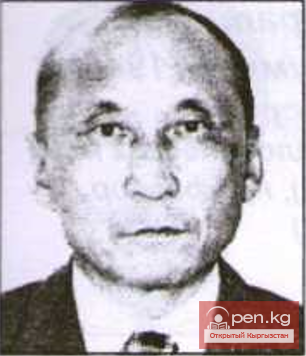Burana - Architectural Heritage.
Located 12 km southwest of the present-day town of Tokmak is the medieval settlement of Balasagun, the capital of the Karakhanid Khanate (940 - 1210 AD).
The Karakhanid Khanate was the largest feudal state in Central Asia during the 10th-12th centuries. The first Karakhanids conquered most of Eastern Turkestan, Central Tien Shan, Semirechye, and Fergana.
The capital of this state was the city of Balasagun, founded in the mid-10th century in the eastern part of the Chui Valley. The history of the city is short. In 1218, Balasagun surrendered without a fight to the advanced troops of the countless Mongol invasion and ceased to exist by the mid-14th century. Its name was forgotten, and only the minaret and the remnants of fortifications testify to the once-existing capital of a powerful state.
The current name "Burana" for the tower comes from the Arabic "minara," which means minaret. The period of the Karakhanid dynasty in the history of Kyrgyzstan was a time of the highest level of development of feudal relations in the economy, trade, and politics.
It was during this period that the famous works in the Turkic language were written by Yusuf, a native of Balasagun.
Yusuf Balasaguni lived from 1015/16 to 1070. At the age of 50, he began working on his first poem "Kutadgu Bilig," which he completed in 18 months. He presented it as a gift to the ruler (khan) of Kashgar.
The city of Balasagun occupied an area of 25 sq. km and consisted of two parts: a central part representing a quadrangular fortress and urban buildings surrounding the central part.
The city was surrounded by two rows of fortress walls. The length of the outer ring reached 20 km. A river flowed through the city, and pipes for water supply and irrigation were laid in various directions from it.
The Burana Tower – the minaret of the Jami Mosque (late 10th century - early 11th century) – is located in the eastern half of the central part of the settlement, near the palace. The minaret is one of the oldest structures of this kind in Central Asia, and its constructive and decorative details reflect techniques from pre-Islamic architecture.
The original height of the Burana minaret was 45 meters, and its top was crowned with a lantern dome that had four doorways facing the cardinal directions. Currently, the height of the tower is 24.6 meters, as the rest of it collapsed during one of the strong earthquakes that occurred around the 15th-16th centuries.
The Burana Tower consists of three parts: a powerful square foundation, buried 5 meters into the ground, a base in the form of a regular octagon 4 meters high, and a round shaft tapering towards the top, nearly 18 meters high. The decorative masonry of the shaft is divided by concentric belts: the smooth surface of the masonry alternates with ornamental stripes. The entrance to the tower is located on the southern side, 5 meters above the base. After the restoration of the minaret in 1984, a spiral staircase was added to the entrance.
Many legends are associated with the history of this tower. According to one of them, a powerful local khan built the minaret to protect his only daughter from a deadly bite of a black widow spider, which was abundant in these areas, as foretold by an oracle. Despite the father's efforts, the prophecy comes true, and the daughter dies from the bite of a spider brought into the refuge with bunches of black grapes. The tower becomes the tomb of the khan's daughter.
Currently, an archaeological and architectural open-air museum has been established and is functioning at the Burana settlement. A significant collection consists of stone sculptures collected from the destroyed ancient Turkic burial mounds of the Chui Valley, Kemin Valley, and Issyk-Kul basin. The stone sculptures represent artworks with meticulous detailing of facial features, headgear, adornments, clothing, weapons, etc. The museum's collection includes sculptures that are genuine masterpieces of visual art from the 6th to 10th centuries. They are not related to the history of the city and represent entirely different eras, ethnicities, and types of culture of ancient Tien Shan.














































